
When Raffy first heard of this brand, she automatically knew she wanted to work with them. She’d had always appreciated brands who help reduce waste in any aspect but this brand takes it to a whole new level by taking that problem with another to turn into an unconventional solution.
Before even getting to Korea a lot of preparations were done before our trip. We had already known beforehand that our immersion was only half a day so we both made sure to research the company as much as we could find and understand. We also did our own individual preparations—Roxy made sure that everything was prepared for the trip, from accommodations to flight bookings. Raffy, on the other hand, had decided to study a bit of Hangul and Korean, for any emergency cases.
Then finally the day of our flight came. We nervously and excitedly made our way to Korea.
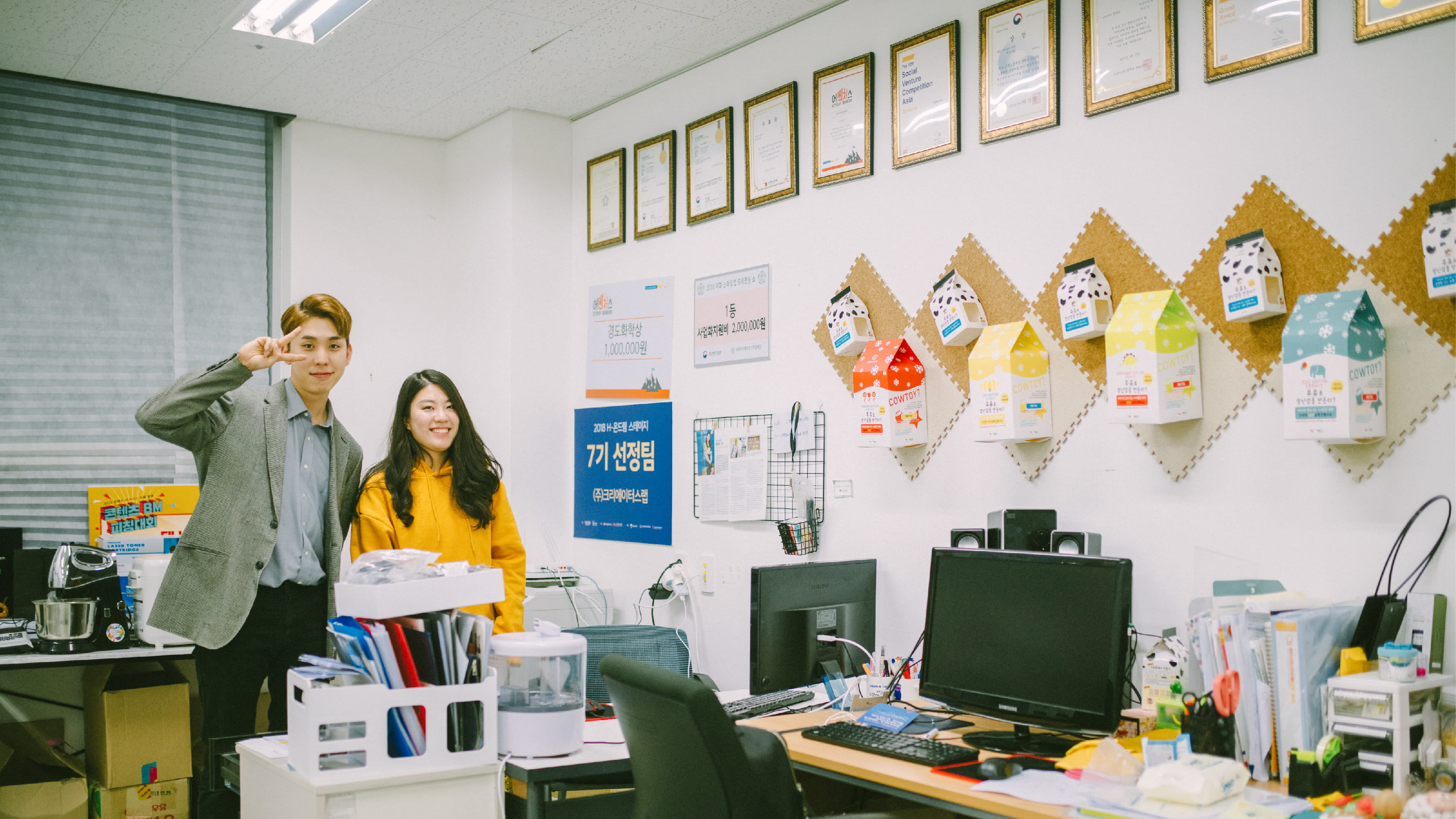
Youngchan and Jenna pose for a photo in their office.
The day after we arrived, we met with Jenna and Youngchan, CEO and CTO of CowCau. They picked us up and took us to Ewha University where their office is located. We then saw a glimpse of how they made their products and learned about their company’s story. The office, despite being relatively small, had everything they needed to develop their products, from food tech and development to marketing and designing. Aside from the office we went to, they also have a warehouse that holds the rest of their products.

Their brand Safety Jewel sponsors children who were abused and children with disabilities.
CowCau is actually a brand under their main company, Creator’s Lab, with an overall vision for a safer environment for all children through their values of safe play, safe design, and safe education. They’ve developed toys, skincare, and jewelry under this company. For this collaboration, we specifically worked with CowCau—their brand that produces unique clay toys.
Jenna and Youngchan shared with us a story of a 3-year-old boy playing around with regular “non-toxic” clay, which he accidentally swallowed. In most cases, the clay would just go through the child’s digestive system, but unfortunately, in this particular case, the boy did not survive.
Clay can be one of the most dangerous household toys because of how easy it is to mold into small pieces that children can swallow. Jenna told us that a lot of children’s toy brands market themselves as non-toxic and safe when, in reality, they aren’t at all. Based on their research in 2016, about one-third of toys found in daycare centers and kindergartens exceeded hazardous substance standards. This is what pushed them to start CowCau.
They wanted to find a way to make this staple toy safer. When they found out about the milk glut happening all over the world, it gave them the idea of killing two birds with one stone—if one can shape milk into cheese, why can’t they do the same for clay? That’s how their first clay product, Cowtoy, came to be!
Cowtoy is a do-it-yourself clay that’s edible and made of natural ingredients, designed for curious children. It takes little effort and parental supervision to create the clay but it’s a good and educational way to spend quality time with kids. The product comes in different packages with different markets in mind—the main and most relevant one being the educational kit, which includes booklets, puzzles, and more color options. These are usually sold directly to schools to promote child safety and creativity in their curriculum. The other kits are designed for retail and for bulk sale. The CowCau team also visit different schools in Korea to give talks to teachers and parents about child safety.

The educational kit laid out to show its content and on its right, the retail kit with basic materials. Clay colors are based from fruits and other natural food flavors.
During our immersion, what we noticed first was that they already have well-designed packaging with illustrations of cute animals, patterns, and objects on it. It was hard to find fault in their brand collaterals, other than the fact that they didn’t have a specific, cohesive illustration style.
We also asked about their audience. For the most part, their product has been well-received and has even won several awards. Korean personalities have promoted and used their products as well. The only challenge they faced with the products was that it was difficult to sell to parents who didn’t prioritize enough time for their kids.
These insights then led us to the 3 main challenges we saw for CowCau. Firstly, their visual identity could be more cohesive. Secondly, the illustrations can be more relatable to children with characters they could connect with, which would also help with brand recall. Lastly, we saw that marketing efforts could be strengthened. They knew that in order to instill a safer environment for children, it all starts at home.
With all this in mind, we went straight to work while occasionally sipping on coffee and taking cat-petting breaks. We then prepared our proposal with the objective of answering the three main challenges we observed.

Aligned visual identity
Our first objective was to effectively tell CowCau’s story and values by aligning what they create with their visuals. We were inspired by how flexible and moldable clay was and saw that this could be the main visual motif for their brand. Clay could be anything you like. You could shape it into a forest, a coral reef—anything you could imagine.
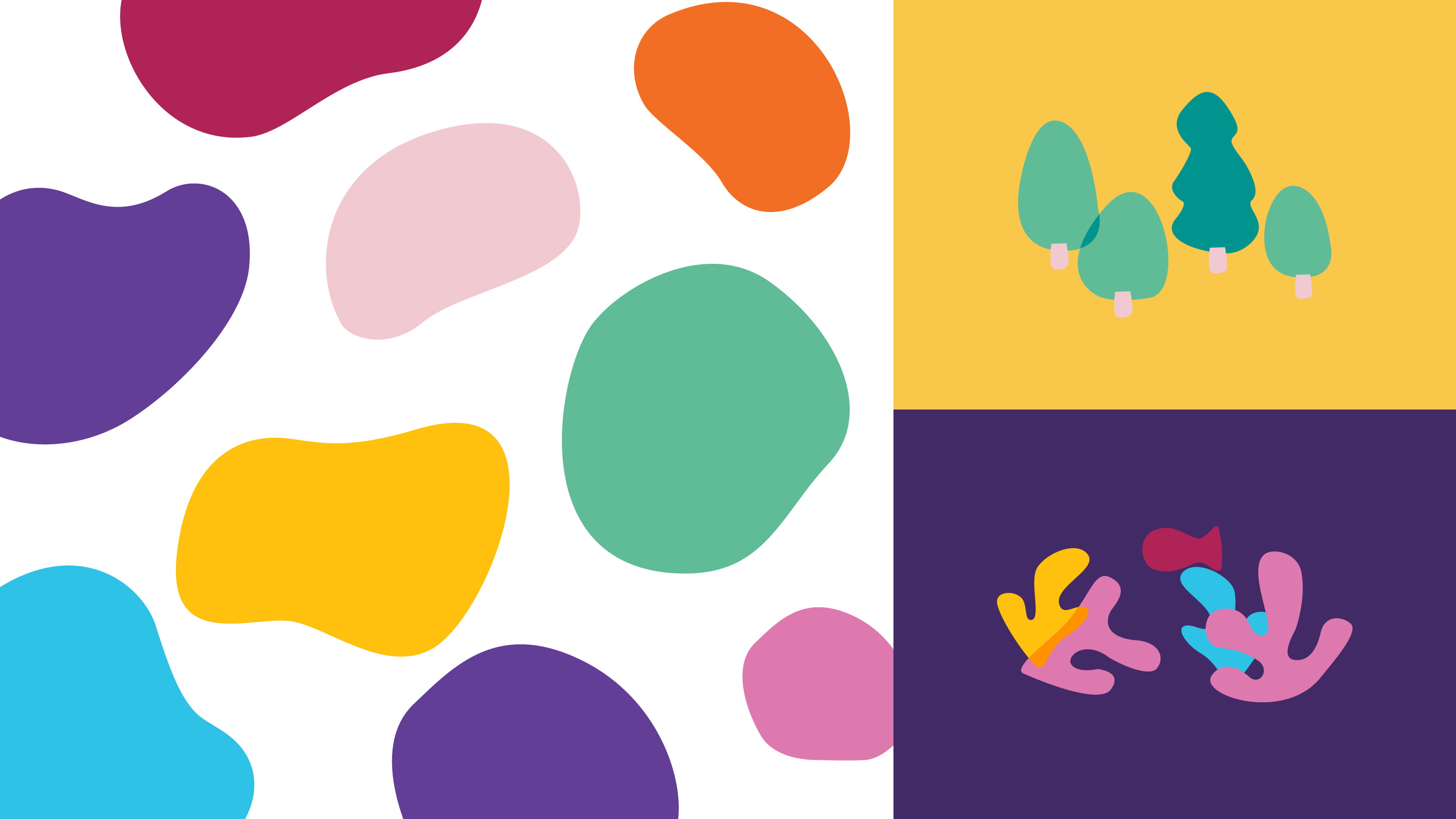
Clay as our main motif molded into a forest and a coral reef.
We also then assigned a clay shape and color for each type of clay toy they have and are developing. The clay could also show how the different values intersect with each other thus creating their brand CowCau. The same with Cowtoy, an innovative product that answers the problem of milk overproduction and unsafe toys.
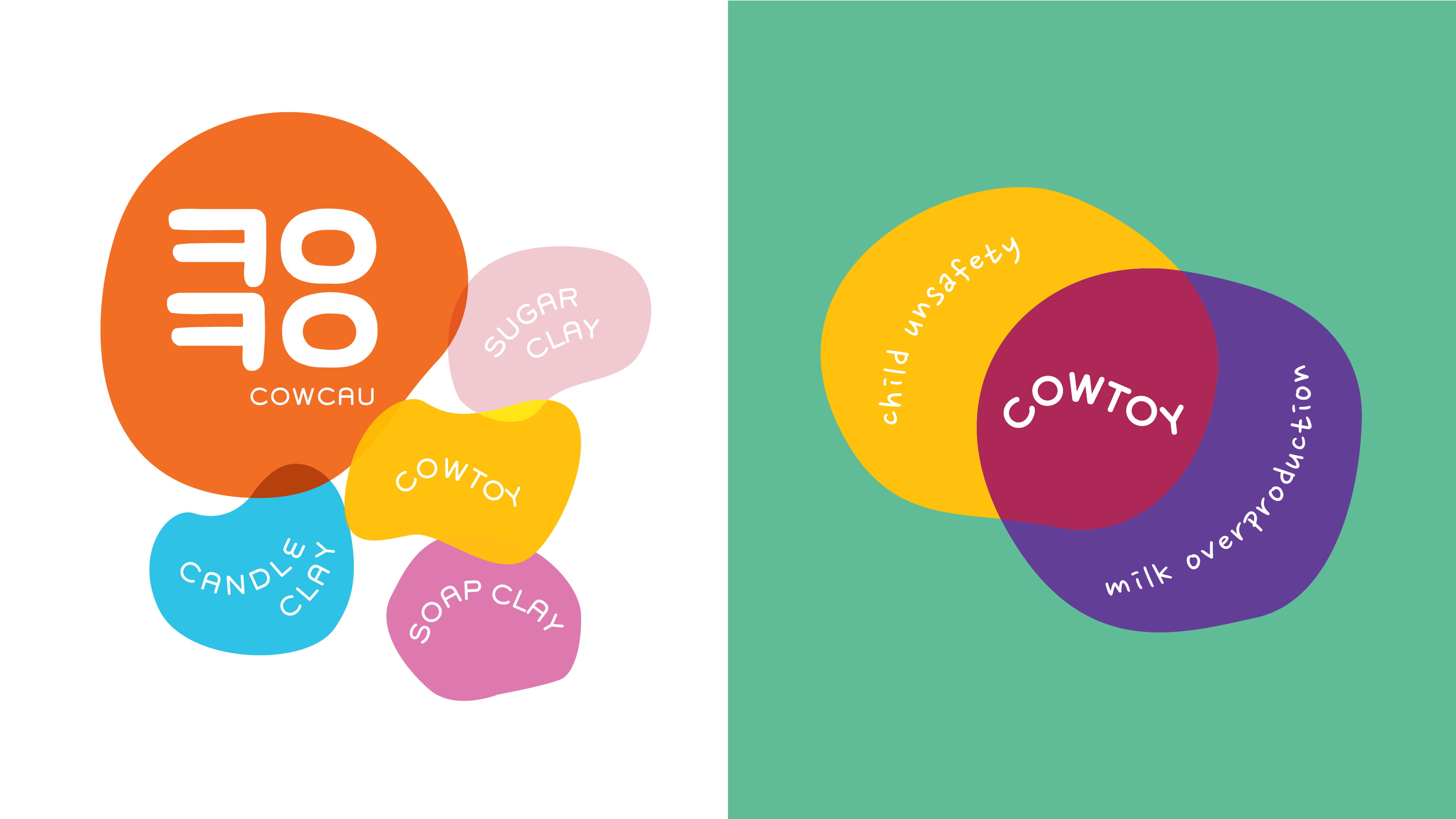


With the clay’s visual language in mind, we also refreshed and standardized their Cowtoy logo to be able to work with several other clay toys they have created. As part of aligning the brand, we also proposed a colorful pastel palette that was reminiscent of the clay colors they produce, and a round and friendly typeface that was fitting for their audience and goal.
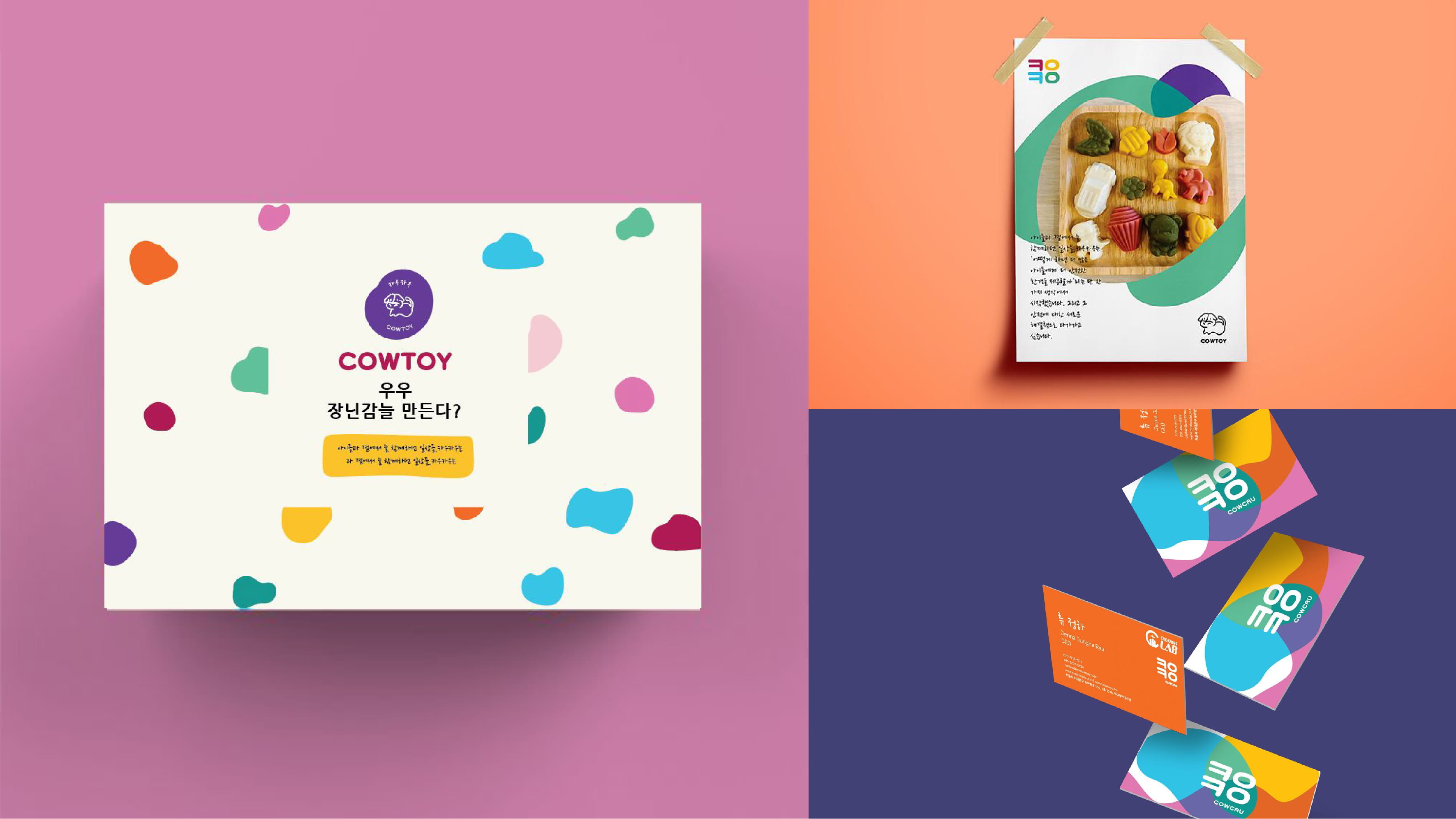
With the visual identity aligned we applied it on their packaging, a poster, and business cards.
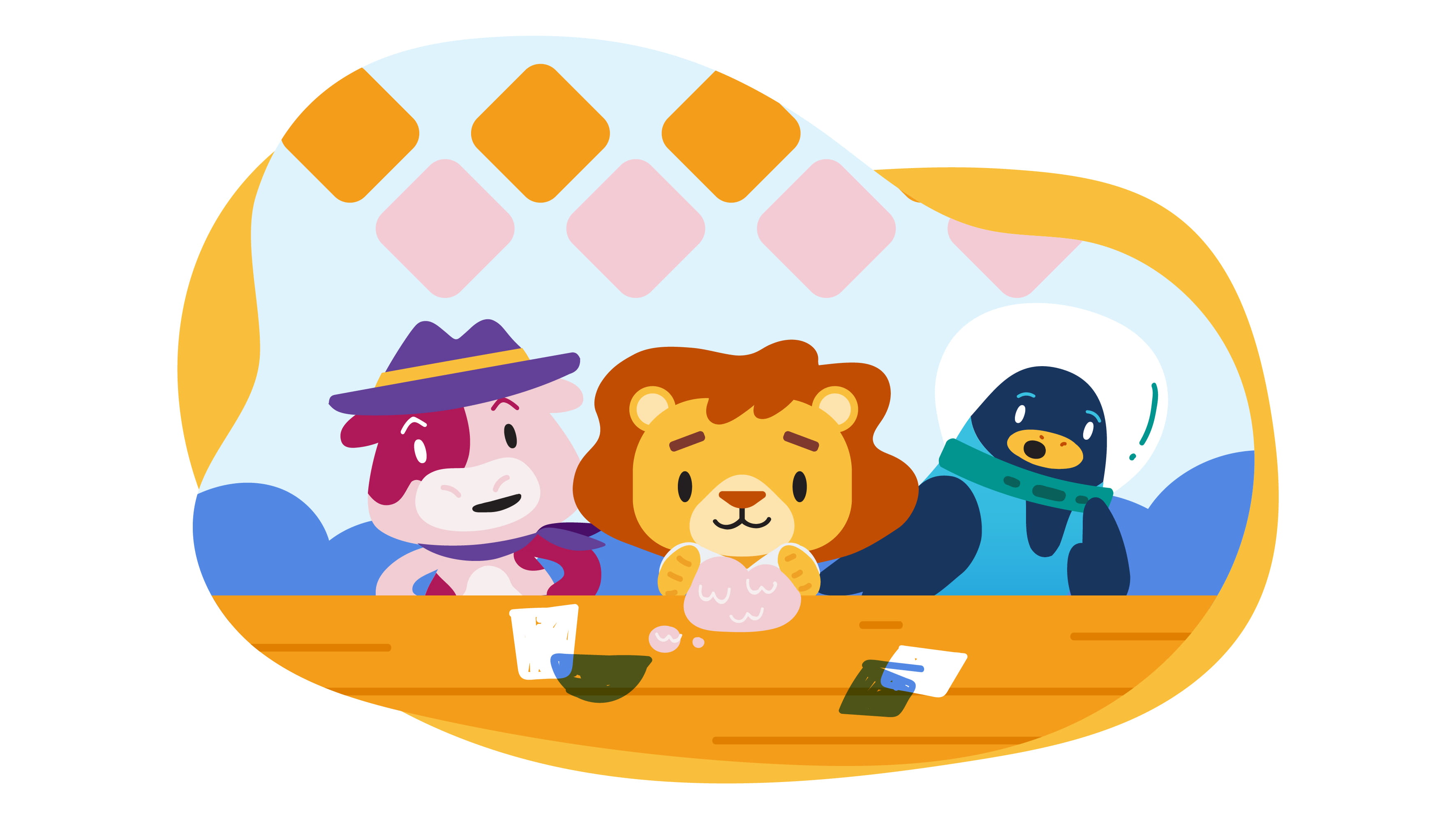
Min-hyung, Yeh-bin, Haerin making clay.
Memorable characters
Our next goal was to be able to create characters that weren’t just cute, but were also relatable to different types of children. Having characters would also help their brand have easier brand recall and make it easier to market their toys. The overall silhouettes of the characters were inspired by shapes that anyone could easily mold from clay, into which they are then brought to life by their imagination. The animals were also based on well-known animals in Korea.

Min-hyung represents the happy-go-lucky kid who’s adventurous and ready to create new and wild experiments. Lions also represent leadership thus representing the brand CowCau.
Yeh-bin is the curious but responsible child. She’s not as free-spirited as Min-hyung and often questions his experiments, but this doesn’t mean she’s afraid to go on adventures. Yeh-bin represents their first and main clay product, Cowtoy.
Hae-rin is the most reserved of them all. She often enjoys playing by herself. It may take time for her to feel comfortable with you, but when she does, she's sure to be the sweetest and most thoughtful friend of all. Hae-rin represents another clay product they have, which is sugar clay.


Application of characters onto school related items.
With both the Visual Identity and character designs aligned, CowCau could effectively tell their story and be more memorable, especially for their future expansions.

A campaign for a safe world
Lastly, we want to involve more parents in CowCau’s vision. Building a safe world involves everyone, especially parents. We want CowCau to move beyond just promoting safe play, safe design, and safe education—we want them to move towards promoting safe homes that would, in turn, lead to a safe world.
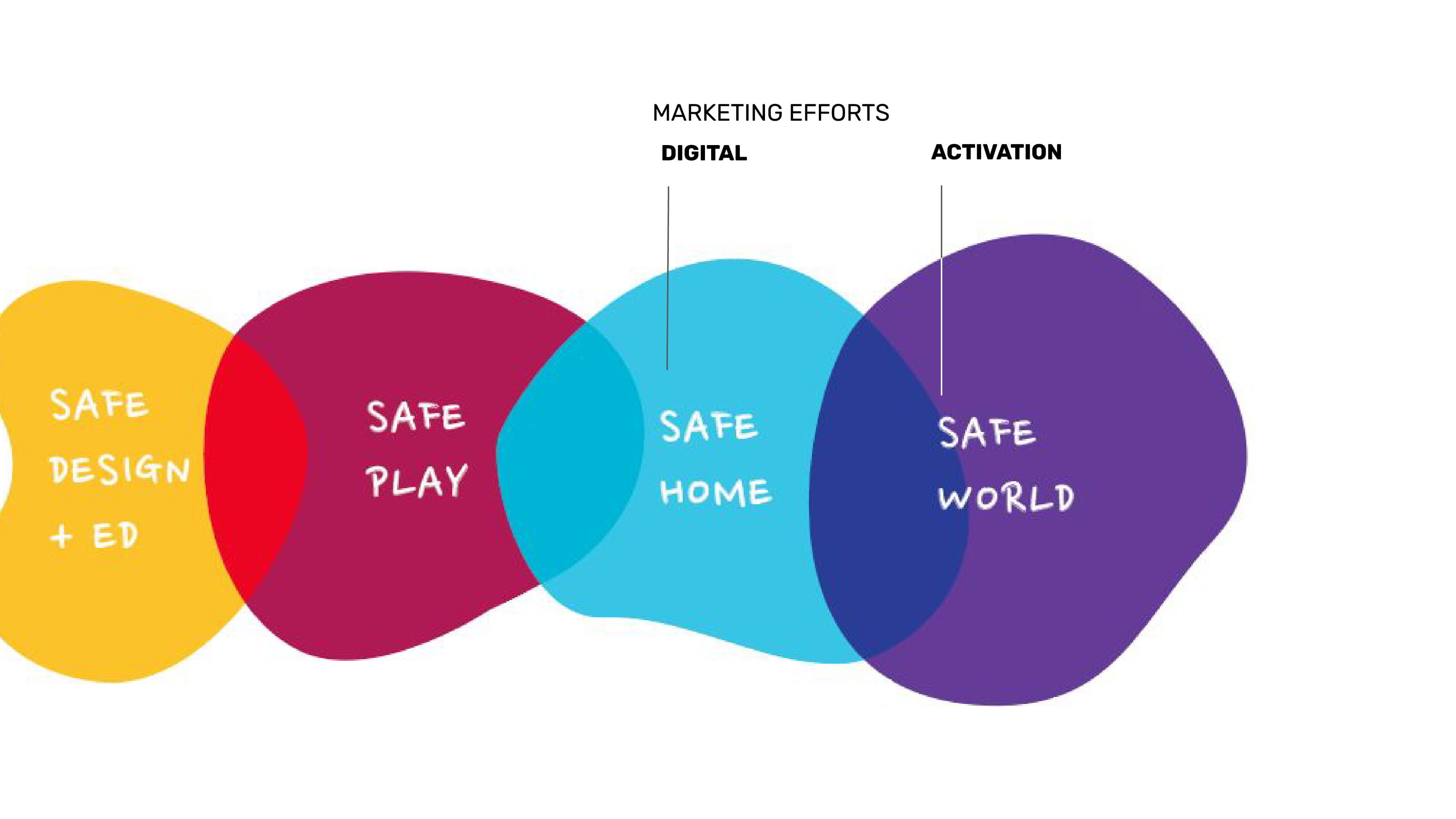


A sample mock-up of how different stories from parents.
Our proposed campaign has two phases, the first being a digital campaign focusing on building a safe home. CowCau could create an online community so that parents could support and collaborate with each other and share stories and reviews of different products. This first phase also features stories of parents who embody CowCau’s values to inspire other parents to create safe environments for their children.

Proposed campaign activation where children and parents can play together to create a safe world.
The second phase is a campaign activation that would help envision a safe world. Included in Cowtoy’s educational kit is a small puzzle piece which kids can use to mold animal shapes and play with on an already set scene. Inspired by this, we proposed to have a school or community event where, instead of already having a prepared scene, children would have the freedom to create and build the safer world they envisioned. Involving parents in CowCau’s vision turns into a community sharing and learning from each other that ultimately rallies everyone for a safer home and a safer world.
Through this experience, we, as designers, were able to see how much illustration and design are valued in Korea. Even without a visual brand architecture or design team, you can expect Korean brands to still look clean and well-illustrated. Despite CowCau having such a small team and busy schedules they’re able to build a company that’s meaningful and innovative. Jenna at the time was taking a Master’s degree while also handling their company. Youngchan at the time was still studying too!
It was awe-inspiring to see their innovations as well. CowCau tries to solve as many problems they can, crafting solutions out of the resources they have. They were able to see that the overproduction of milk that was considered waste could be turned into something creatively helpful. We’re inspired by the way they’re able to take two totally different problems and be able to connect them together to create a solution for both.
—Creative Connect is a design exchange where Works of Heart designers collaborate with nonprofits and social enterprises in Asia, with the aim of using design for social impact. Read more about it here.
If you’re an Asian nonprofit, social enterprise, or an impact-driven organization and are interested in joining this program, send us a message at cc@worksofheartph.com.
